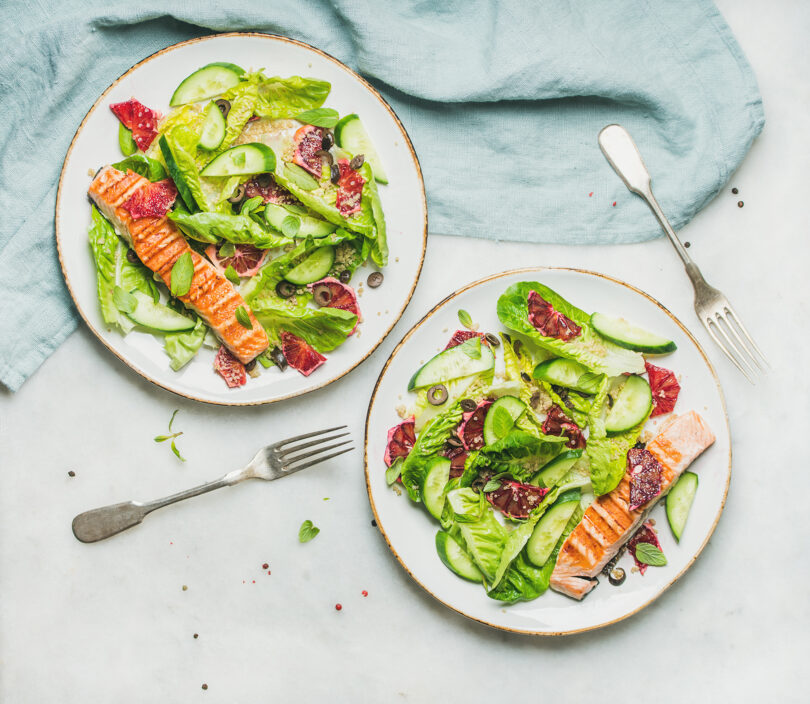By Barton Seaver
www.bartonseaver.com
After a hectic day, I enjoy having an unhurried conversation with my wife over a glass of wine. Slow roasting a piece of fish while enjoying that ritual means we get to eat a healthy dinner while we continue our conversation.
Cooks tell me they shy away from cooking fish at home because they worry about overcooking it. To that, I recommend roasting fish at a lower temperature, say 300, even as low as 275, degrees Fahrenheit. This method, much like broiling, is a perfect technique to pull off in a toaster oven. The smaller space gives cooks better control of the ambient temperature so the fillets roast evenly.
The gentle heat gives the finished fish a delicate texture full of natural juices and healthy oils. Using a lower heat technique dictates that it takes longer for the seafood to go from raw to cooked, but by that same principle, it also takes more time to go from cooked perfectly to positively over-cooked.
This method is applicable to all sorts of fish, from softly-flaked flounder to perennial favorite: salmon. And it yields custard-like halibut. To prepare any seafood for slow roasting, simply season it with salt, drizzle it with olive oil and arrange it on a pan with a good amount of space between each piece of fish so it will all cook evenly. In a 275 to 300-degree oven, the rule of thumb is 20 minutes roasting time per inch of thickness. If your fish is ½-inch or ¾-inch thick, check after 10 and 15 minutes, respectively.
The fish is done when it flakes apart under gentle pressure of your thumb. The color does not change drastically, but be confident that if it flakes, it is done. The texture is soft due to the retained moisture, so pair the roasted fish with something crunchy – an herb salad, raw cucumber relish, or a garden pico de gallo for a delicious, texturally interesting meal.
This flexible technique helps cooks get more healthy seafood on the table more often. Seafood is a clean and lean protein that provides a variety of nutrients proven to be beneficial to heart and brain health. Eating it can boost your energy, make you feel better, and help you live longer.
Please take the Seafood Nutrition Partnership’s Pledge to Eat #Seafood2xWk as a positive commitment to eat the USDA’s recommendation of eating two servings of seafood per week. For more information about the pledge, go to www.seafoodnutrition.org.
Slow Roasted Salmon with Minted Cucumbers
Serves 4
1 ¼ pound piece of skinless, boneless salmon
Olive oil
Salt
3 medium cucumbers
1 tablespoon cider vinegar
Salt
1/2 cup thinly sliced red onion
Leaves from 10 sprigs of fresh mint, cut crosswise into ribbons (about 1/4 cup)
Preheat oven to 275-300 degrees. Place fish on baking tray, season it with salt. Drizzle olive oil over fish. Place tray in oven and bake. Check doneness after 20 minutes by pressing gently with your thumb. If the fish flakes apart, it is ready. If not, cook an additional 3 minutes and check again.
Peel cucumbers lengthwise, leaving thin strips of peel between each stroke for a striped effect. Trim and discard ends. Cut each cucumber in half lengthwise, then slice crosswise in ¼-inch thick half moons. Combine cucumbers in a bowl with 2 tablespoons olive oil, vinegar and salt to taste. Let sit 5 minutes and toss with onion mint. Serve salad along side roasted fish.



Leave a Reply